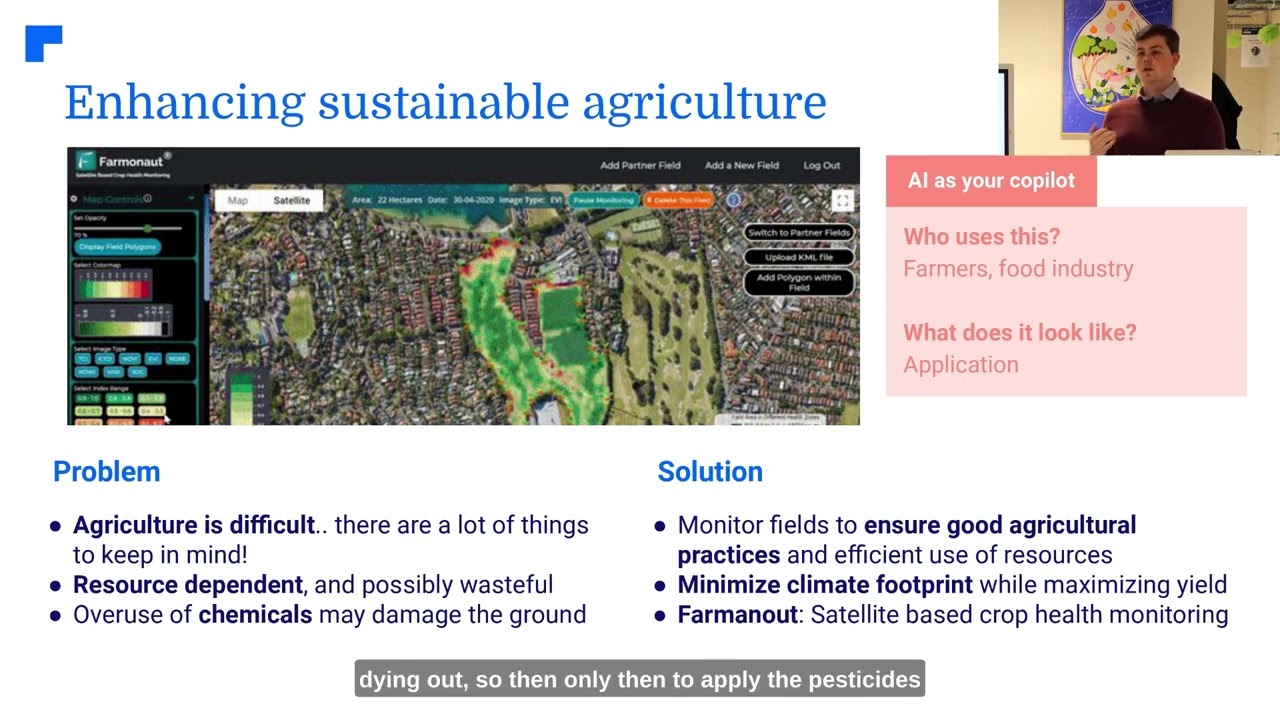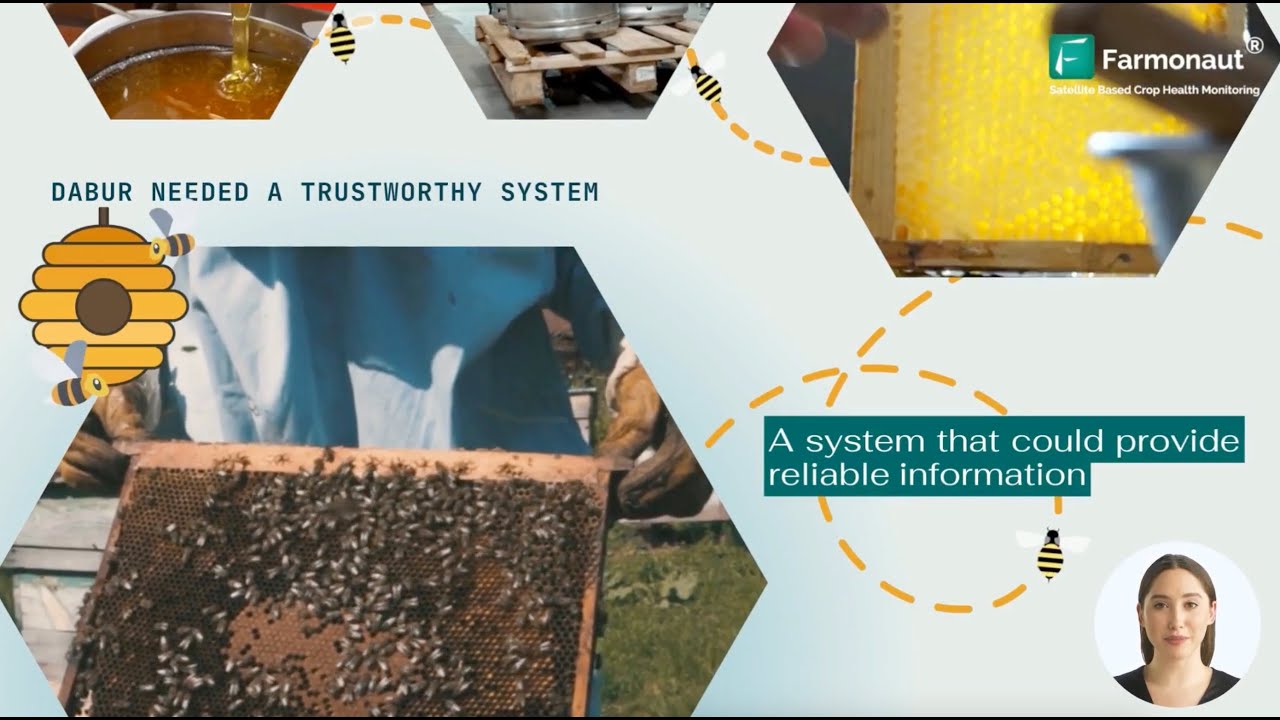PFAS Contamination in San Diego: 7 Urgent Actions for Clean Water
Introduction: The Rising Threat of PFAS in San Diego
In recent years, the issue of PFAS contamination has become a critical concern for San Diego, CA and the entire United States. These so-called “forever chemicals” present in water, air, and soil, pose profound environmental and human health risks. At Farmonaut, we recognize that tackling PFAS contamination in San Diego requires a multi-faceted approach, integrating new EPA actions, innovative testing strategies, and robust community engagement.
This article explores the latest federal government and Environmental Protection Agency (EPA) interventions, the urgent actions identified to secure clean water, and the critical role technology can play—especially for agricultural and environmental monitoring. We delve into PFAS testing strategies, discuss the EPA’s new guidance on PFAS disposal, and highlight how every community member can help address this escalating crisis.
Let’s begin by understanding what makes PFAS so dangerous—and so difficult to eliminate from our environment.
Understanding PFAS: The “Forever Chemicals” Crisis
Per- and polyfluoroalkyl substances (PFAS) are a group of thousands of synthetic chemicals widely used in consumer, commercial, and industrial products. These chemicals are prevalent in everything from non-stick cookware and firefighting foam to food packaging and textiles.
Why Are PFAS Known as “Forever Chemicals”?
PFAS are dubbed “forever chemicals” because of their extreme persistence in the environment. Unlike many other contaminants, PFAS do not break down easily—they resist water, oil, heat, and other environmental factors, remaining in soils, aquifers, rivers, and animal tissue for hundreds to over a thousand years.
How PFAS Enter Our Environment
- Industrial discharge: Factories and manufacturing plants release PFAS into local water, air, and soil.
- Consumer products: Everyday use and disposal of products containing PFAS result in contamination.
- Firefighting foams: Aqueous film-forming foams (AFFF) used at airports, military bases, and firefighting sites are a significant source of PFAS in the environment.
- Wastewater and landfills: PFAS leach from landfills and are often not removed by conventional wastewater treatment.
PFAS in San Diego: The Local Challenge
PFAS have been detected in water systems, air, and soil across San Diego, CA. These chemicals have also appeared in humans and animals—their ability to accumulate in living tissue over time increases the risk of chronic health issues and ecosystem disruption.
One of the greatest challenges is that there are thousands of PFAS chemicals, and they are found in many different products, making it challenging to study and assess their potential human health and environmental risks. PFAS testing and control is further complicated because not all substances can be easily measured or regulated with current technology.
Focus on Drinking Water: Why It Matters
The EPA estimates that over 200 million Americans may be exposed to PFAS contamination in drinking water. For San Diego residents, ensuring clean water means understanding where PFAS are coming from, how they persist, and what urgent actions we can take.
Human Health Impact of PFAS and Environmental Risks
The human health impact of PFAS is under intense scientific scrutiny. PFAS can be detected in blood, tissues, and breast milk of humans and animals. As the EPA and additional research institutions emphasize, the persistence of PFAS and their bioaccumulative properties make them a threat on multiple fronts.
How PFAS Affect Humans and Animals
- Cancer: Certain PFAS, such as PFOA and PFOS, are linked to increased cancer risks (kidney and testicular).
- Immune system suppression: Elevated PFAS exposure may lower vaccine response in children and increase infection risk.
- Developmental issues: PFAS exposure in pregnancy and early childhood can harm development, reduce birth weight, and affect learning and behavior.
- Thyroid disruption: Some PFAS are associated with hormonal imbalances and thyroid disease.
- Liver and kidney damage: Chronic PFAS exposure is connected to adverse effects on these organs.
- Ecosystem impact: Wildlife, especially fish and birds, show significant PFAS accumulation, disrupting reproductive and metabolic functions.
PFAS in Air and Soil: Beyond Water
While drinking water remains a primary concern, PFAS also proliferate in air and soil. Airborne PFAS have been detected downwind of manufacturing facilities and firefighting sites, while soil contamination affects agricultural land, urban parks, and residential backyards.
The environmental risks of PFAS include contamination of food crops, increased exposure through dust and air, and the challenge of remediating soil and aquifers impacted for generations.
Key Environmental Risks of PFAS:
- Contaminated groundwater and aquifers
- Soil accumulation, reducing agricultural land safety
- Transfer through the food chain (plants and animals)
- Atmospheric spread and deposition
- Challenges in destruction and disposal of contaminated materials (PFAS disposal guidance)
EPA’s Latest Steps: 7 Urgent Actions for Clean Water
To address the growing crisis of PFAS contamination in San Diego and across the country, the EPA and the federal government have unveiled bold, urgent actions that focus on:
- Strengthening science
- Fulfilling statutory obligations and enhancing communication
- Building public and private sector partnerships
Here are the seven most critical EPA actions that we must implement to ensure clean water and environmental protection for all San Diego, CA residents:
-
Designating a PFAS Agency Lead
To improve coordination, the EPA is designating a dedicated PFAS lead responsible for cross-program management, ensuring PFAS initiatives in water, air, land, and soil are unified.
-
Implementing a PFAS Testing Strategy under the Toxic Substances Control Act
The new pfas testing strategy enables systematic evaluation of thousands of PFAS in products, air, soil, and water. This helps to address information gaps and uncover substances that could not previously be controlled or measured.
Access environmental API developer documentation to integrate PFAS risk and environmental monitoring data for your research or business.
-
Providing Updates to EPA’s PFAS Destruction and Disposal Guidance
New updates will ensure that materials containing PFAS are destroyed or disposed according to strict safety protocols, limiting further contamination and protecting public health.
PFAS destruction and disposal guidance is a crucial step in breaking the cycle of environmental persistence. -
Developing Limitation Guidance for PFAS Manufacturers and Meta Finishers
The EPA is drafting and enforcing new rules that will restrict PFAS emissions, specifically targeting manufacturers and industries that finish metal products—key sources of PFAS entry into water and soil.
-
Enforcing the Clean Water Act on the Use of PFAS Chemicals
With Clean Water Act PFAS enforcement, the agency will impose clear standards, prevent discharges from exceeding allowed limits, and increase accountability for polluters.
Farmonaut’s Carbon Footprinting tools enable organizations to track emissions—including from PFAS sources—advancing compliance and sustainability goals.
-
Establishing a Clear Liability Framework
The EPA is setting in place policies to establish liability for those responsible for PFAS discharges, ensuring all polluters are held accountable and communities can seek redress.
-
Developing State Partnerships and Advancing Cleanup Efforts
Collaboration with states like California will advance PFAS cleanup efforts, especially where legacy contamination is impacting drinking water systems, land, and air. The EPA will support local governments, provide new funding, and review air emission petitions as part of this comprehensive response.
Explore Farmonaut’s fleet management system for efficient logistics in environmental cleanup projects—reducing operational costs and carbon footprints.
PFAS Testing Strategy: New Approaches and Challenges in San Diego
A major focus of the EPA actions unveiled this year is the implementation of an expanded PFAS testing strategy—especially under the Toxic Substances Control Act. Understanding and controlling the threat of forever chemicals in drinking water, as well as in air and soil, means closing information gaps about detection and behavior of these chemicals.
Key Testing Challenges:
- There are thousands of PFAS chemicals, many of which are not yet controlled or measured by standard tests.
- New PFAS compounds are constantly being developed for consumer, commercial, and industrial products.
- Traditional water and air monitoring may miss emerging or low-concentration PFAS.
- PFAS can migrate and persist in soil and aquifers for decades with little degradation.
Improved PFAS Detection Methods
- Advanced analytical techniques (e.g., liquid chromatography–mass spectrometry, high-resolution mass spectrometry)
- Expanded monitoring programs in communities, particularly those at risk of legacy contamination
- Comprehensive reporting and data-sharing mandates for manufacturers and water utilities
For those in agricultural, research, or regulatory sectors, robust environmental monitoring is more important than ever. Use Farmonaut’s satellite-based API to complement PFAS monitoring with real-time crop and land health data—vital information for both compliance and remediation initiatives.
Summary Table of EPA Actions and Estimated Impact
The following table summarizes the EPA’s actions on PFAS in San Diego, estimated implementation timelines, targeted environmental media, as well as the anticipated reduction in PFAS levels and projected human health benefits. These actions aim to ensure clean water, air, and land for every American.
| EPA Action | Estimated Implementation Year | Action Focus (Water/Air/Soil) | Estimated Reduction in PFAS Levels (%) | Human Health Benefit (Est. Population Protected) |
|---|---|---|---|---|
| Designate PFAS Agency Lead | 2024 | All (Water, Air, Soil) | 5-10% | 2 million+ |
| Implement PFAS Testing Strategy (TSCA) | 2024–2025 | Water, Air, Soil | 10-15% | 3 million+ |
| Update PFAS Destruction and Disposal Guidance | 2025 | Soil, Water | 20-25% | 5 million+ |
| Develop Guidance for PFAS Manufacturers/Meta Finishers | 2024–2026 | Air, Water, Soil | 30-40% | 7 million+ |
| Enforce Clean Water Act PFAS Standards | 2025–2026 | Water | 40-50% | 15 million+ |
| Establish Liability Framework for PFAS | 2024–2025 | All (Water, Air, Soil) | 10-20% | 4 million+ |
| Develop State Partnerships/Advance Cleanup Efforts | 2024–2027 | All | 60% (in target locations) | Entire impacted region |
Implementing these EPA actions on PFAS aligns directly with sustainable practices, safeguarding both public health and the local environment in San Diego, CA.
Farmonaut Insights: Technology for Environmental Monitoring
Modern technology offers invaluable tools for monitoring, understanding, and responding to the PFAS crisis. At Farmonaut, we are committed to supporting farmers, agribusinesses, government agencies, and local communities in the ongoing fight against forever chemicals. Let us briefly highlight how leveraging data-driven, satellite-based solutions is vital for addressing environmental risks of PFAS and securing a sustainable future.
What Does Farmonaut Offer?
- Satellite-based Crop & Land Health Monitoring: We provide real-time insights into vegetation health, soil moisture, and ecosystem changes—helpful for detecting PFAS “hotspots” and measuring the impact of remediation over time.
- Jeevn AI Advisory System: Our AI-powered tool supplies personalized, science-backed advice to farmers on sustainable practices, reducing environmental risk from chemical usage and helping avoid additional contamination.
- Blockchain-based Traceability: Enhance transparency in agricultural and food supply chains, tracking product journeys to ensure that contaminated land does not affect consumer safety.
- Fleet & Resource Management: Efficient, satellite-driven logistics for environmental cleanup or monitoring projects—minimizing carbon footprint and reducing chances of secondary contamination.
- Carbon Footprinting: Track ongoing emissions and environmental progress, including regulatory compliance linked to Clean Water Act PFAS enforcement.
With Farmonaut’s large-scale farm management tools, project administrators can map, monitor, and remediate large operations—crucial for addressing legacy contamination and helping transition land back to safe, productive use.
To learn more or request an environmental data assessment tailored for your organization,
visit our official Farmonaut website or sign up for a free platform trial through our apps:
Learn how Farmonaut can facilitate broader environmental protection, proactive farm management, and public health safeguarding—especially in the context of San Diego’s PFAS challenge.
What San Diego Communities Can Do
Government action is only part of the solution. Our communities, especially in San Diego, CA, play a vital role in tackling PFAS contamination. Here’s how we can all contribute:
- Stay informed about local water, air, and soil testing results and participate in EPA and state reporting programs.
- Avoid products containing PFAS (such as stain-resistant, waterproof, and non-stick items) where possible; support companies with clear “PFAS-free” labeling.
- Properly dispose of consumer goods (firefighting foam, textiles, etc.) to reduce environmental leakage.
- Advocate for stronger polluter accountability and push municipal leaders to accelerate cleanup of impacted sites under the latest PFAS cleanup efforts.
- Implement best practices on agricultural land—use remote monitoring, sustainable irrigation, and safer pest control options as enabled by satellite-based apps like Farmonaut.
If you manage farmland or environmental projects, discover how Farmonaut’s monitoring and advisory platform can help you safeguard your land and ensure resource compliance.
Useful Farmonaut Links for Environmental Stakeholders:
- Farmonaut Web App
- Farmonaut Satellite & Weather API – for developers and researchers
- API Developer Documentation
- Blockchain Traceability Solution
- Carbon Footprinting Solution
- Crop Loan and Insurance Verification
- Fleet Management for Cleanup
Frequently Asked Questions: PFAS Contamination in San Diego
What are PFAS and why are they called “forever chemicals”?
PFAS (per- and polyfluoroalkyl substances) are a group of thousands of synthetic chemicals that are extremely resistant to breakdown in the environment, thus the nickname “forever chemicals.” Their persistence for over 1,000 years in water, air, and soil means they accumulate and become increasingly difficult to remove.
How does PFAS contamination affect public health?
PFAS have been linked to increased risk of certain cancers, thyroid and hormonal disruption, immune suppression, developmental effects in children, and liver and kidney dysfunction. Both humans and animals can accumulate PFAS in tissues, raising concerns for long-term exposure.
Is PFAS only found in water?
No. PFAS contaminate water, air, and soil. They are present in groundwater, surface water, farmland, urban soils, and are even spread through atmospheric deposition.
What steps are being taken by the EPA to address this crisis in San Diego?
The EPA is implementing seven key urgent actions, including stricter policy enforcement (Clean Water Act PFAS), new testing and measurement strategies, destruction and disposal guidance, state partnerships, and establishing polluter liability. These are designed to coordinate at the federal, state, and local levels for maximum protection.
How can Farmonaut help with environmental monitoring related to PFAS?
Farmonaut provides real-time satellite-based data on vegetation, crop health, and land use. This is invaluable for identifying PFAS hotspots, tracking remediation progress, and supporting data-driven compliance with new regulations. Visit our web app or mobile apps for hands-on monitoring and advisory tools.
Where can I find out if my area has PFAS contamination?
Contact your local water utility, state environmental agency, or the EPA’s PFAS information portal. Many areas in San Diego are currently being monitored and tested and updates are posted regularly.
Conclusion: Toward Cleaner Water, Air, and Land in San Diego
We all have a part to play in tackling PFAS contamination in San Diego. Through a combination of science-driven EPA action, new testing strategies, strong federal and local agency guidance, and innovative technology tools such as those from Farmonaut, we can address legacy contamination, mitigate exposure, and protect public health.
The journey to clean water—and a safe, sustainable environment for generations of San Diegans—begins with knowledge and coordinated action. By working together and leveraging every available technology and regulatory resource, we can overcome the tremendous challenge of forever chemicals in our water, air, and soil.
For more resources on environmental monitoring and to empower your efforts in precision sustainability, explore the full suite of Farmonaut tools and contact us for a demonstration today.





















